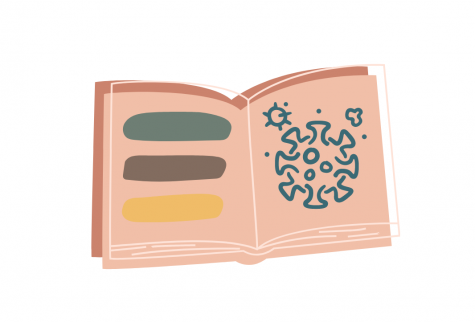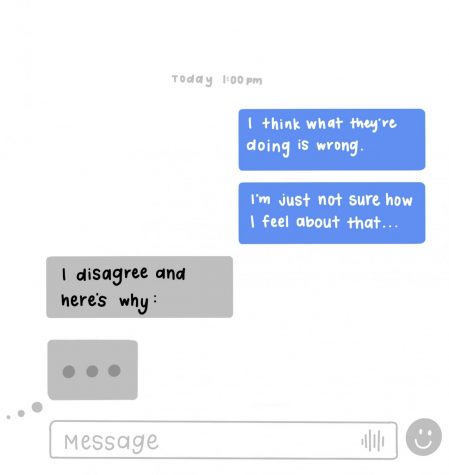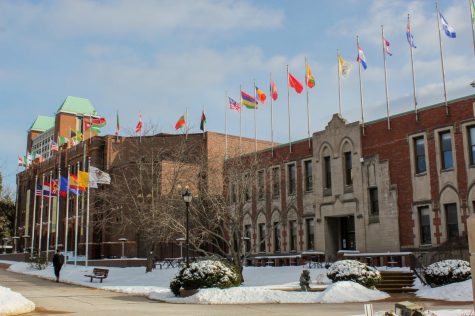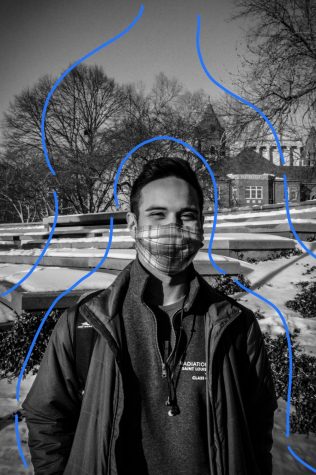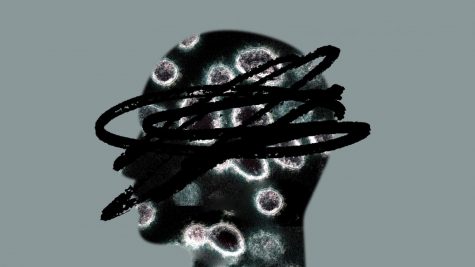When Can Things Just Go Back to Normal?! An Anthropological Analysis of COVID-19
Imagine a place that is cataclysmic. A place filled with vacancy and lack, a place rundown with yesterday’s leftovers. Imagine a place in which every mobile structure you know is suddenly immobile, a place full of abandoned streets and deserted parking lots, wild grocery store customers and paranoid civilians, a place that is free from cultural normalcy but suddenly enslaved to the unknown. Imagine a place that is moving fast, yet slower than ever before, a place in which the things you once took for granted are suddenly the things that bring you the most joy, a place that is not a place at all, but rather the space between you and what you consider home.
Unfortunately, this place is universal, a non-exclusive adaptation that has systematically changed the lives of billions overnight. Within just a few weeks, the life I once knew became a distant memory, and behaviors I once considered normal suddenly became unconventional and aberrant. I started to fear strangers and public spaces, questioning the familiar and wondering over and over again—when will everything go back to normal? The more I asked this simple yet seemingly complex question, the more my responses became simple yet seemingly complex. What defines normalcy? What defines a culture? Can cultural normativity be changed overnight? Have we already experienced this change?
According to American anthropologist-linguist Edward Sapir in his book, “Culture, Genuine and Spurious,” culture is “not of necessity either high or low; it is inherently harmonious, balanced, self-satisfactory. It is the expression of a richly varied and yet unified and consistent attitude toward life, an attitude which sees the significance of any one element of civilization in its relation to all others.”
In other words, culture is defined by a collective frame of mind, a unified perspective that inherently propagates a stable attitude towards life. This stable attitude gives a sense of normalcy and commonality, and allows each element of civilization to influence the next. In turn, this makes every profound cultural change even more significant, because of how deeply persuasive it is on each civilizational element.
For example, Sapir points out how every profound cultural change, especially on an economic-scale, brings about an unsettling readjustment to cultural values. Habitual reactions toward new civilizational environments suddenly become spiritually strifing, forcing individuals and societies to modify their morals in order to preserve the normalcy of their culture and their world. As I look at the current state of the globe, it seems to me that we are all forcing some sort of modification upon ourselves, with the hopes that by readjusting our values now, our world can remain as “normal” as possible later. Changes such as wearing masks and gloves when going out, staying away from public spaces like local parks and beaches and only grabbing essential needs at grocery stores and pharmacies are only a few of the many modifications that we have individually made in order to help the collective.
Scattered heads staying six feet or more away from nervous lip-biters, clammy hands rummaging through scrappy CVS aisles and the occasional “psst, could you keep more of a distance?” are all things that have left me wondering whether or not we will have the same cultural values as we did before this pandemic shocked the globe. Has our continued vitality suddenly come to an end? Or has this planetary shift given us an even deeper understanding of what our cultural values truly signify? This new era of adaptation has questioned the concept of normalcy, and has forced us to decide whether or not we are living in a “genuine” or “spurious” culture.
The “Interpretation Transformation”
Like Sapir, Clifford Geertz, an American anthropologist, believed that culture was a system instilled to broaden our understanding of the world around us.
According to Geertz, culture is “a system of inherited conceptions expressed in symbolic forms by means of which men communicate, perpetuate and develop their knowledge about and attitudes toward life.”
In other words, culture is a set of inherited traits used to deepen our connection with each other and with the world. These traits are interpretive, having both a thick and thin description attached to them, giving them cultural significance and truth. For example, in Geertz’s book “Interpretation of Cultures,” Geertz used Gilbert Ryle’s case, arguing that if someone were to wink at you with no context, you wouldn’t know what it meant. But with context, the wink is distinguishable and it means something. Through cultural interpretation, that wink becomes interconnected to emotional and social systems, making it signify something more than just a weird one-eyed twitch.
As I look at the current state of my hometown, it has become apparent to me that we as a culture are interpreting things vastly different than we were before. Things as simple as seeing more cars than usual on the road has led people like my mother to be skeptical of other people’s actions. Walmart Supercenters that are filled with masked customers suddenly feel unsafe when a few extra pairs of feet show up with their faces exposed and their hands nude. Why aren’t they covered? Why aren’t those open-toed, light-haired teens at home, social distancing themselves? Don’t they care about their health? Don’t they care about the health of others?
The more spine-tingling this pandemic gets, the more I catch myself interpreting the actions of those around me as negative, naive actions. Friendly strangers become not-so-friendly, local hotspots in town become unsafe, unclean and eerie, and the most contemptuous jobs suddenly become the most respected. Our world is experiencing an “interpretation transformation,” one that has dramatically affected the way in which we view ourselves and those around us. The coronavirus pandemic has given me the chance to admire those who are still out there working amidst the crisis, and question my own cultural interpretations of others.
What Even Is “Normal?”
The current state of our world has given us the chance to question the so-called “normalcy” that we’ve all confined ourselves to. Sapir’s theory of culture has proven that the collective frame of mind is one that is driven towards the same attitude, no matter how “richly varied” the idea of that attitude may be. His theory of culture is deeply embedded within ours, proving that we all desire to be happy and at peace. As I examine the condition of our globe, it has become evident that being at peace is in fact the cultural normalcy that we all are hoping to get back to. Unlike Geertz, Sapir questions intense cultural change, and how this type of change transforms the values and morals that a culture has accustomed themselves to. I believe that is why Sapir’s theory of culture is a better one to use when examining the coronavirus pandemic.
Our globe is evolving. And this pandemic has proven that we can no longer sit back and patiently wait until “things go back to normal.” Things will never “go back to normal.” And so long as we sit and hope that it will, the current state of our reality will only continue to look worse and worse to us, all the while “normalizing” before our own eyes.
Your donation will support the student journalists of Saint Louis University. Your contribution will help us cover our annual website hosting costs.




